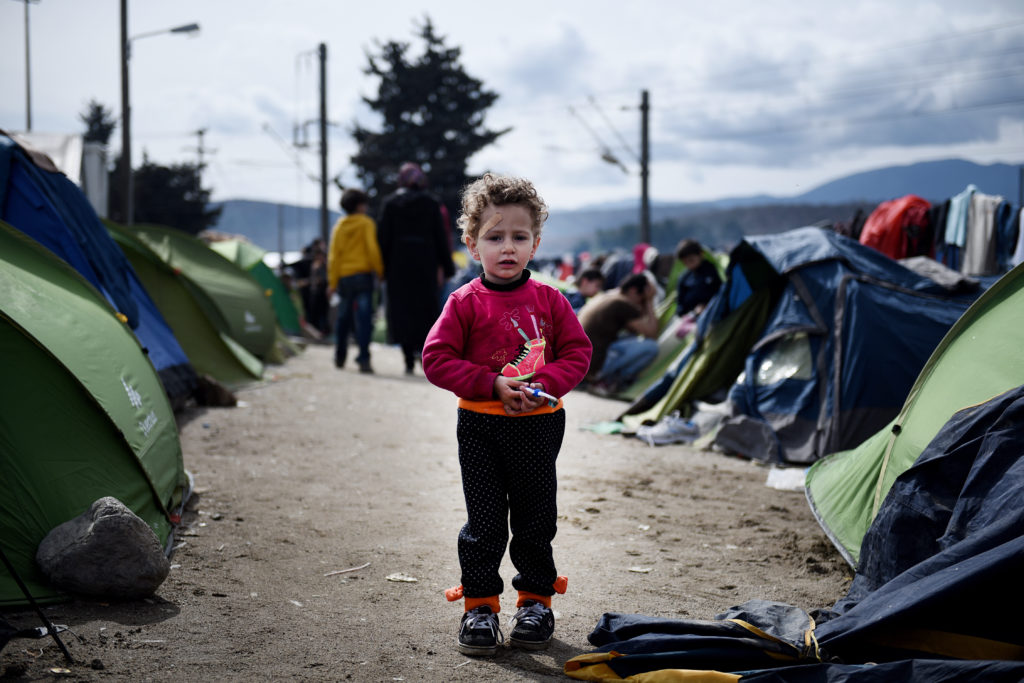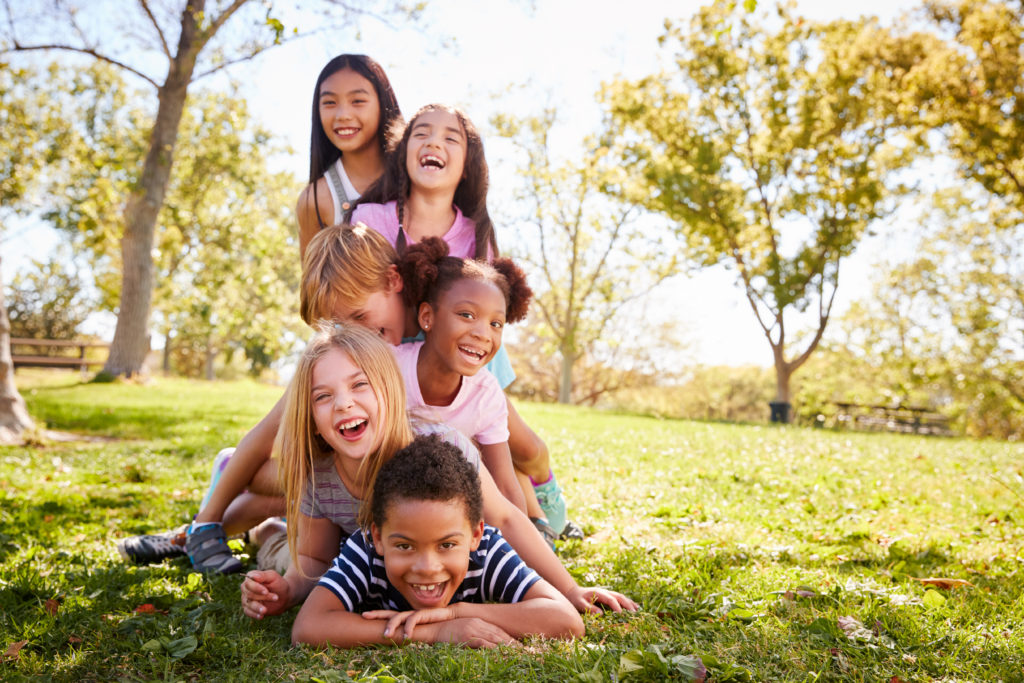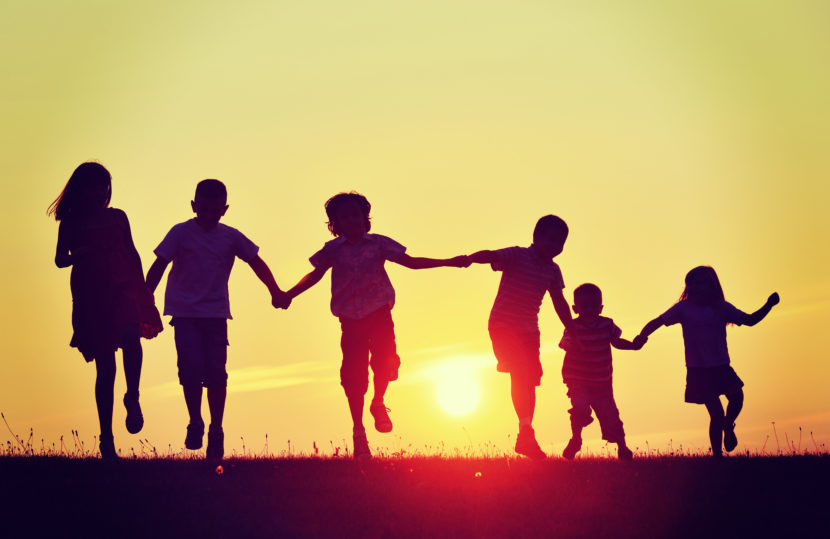In January 2024, during its 95th session, the United Nations Committee on the Rights of the Child decided to draft its 27th General Comment, a landmark initiative addressing one of the most critical yet often overlooked aspects of children’s rights: access to justice and effective remedies. This General Comment marks an important step in ensuring that children, particularly those in vulnerable situations, can fully exercise their rights within legal systems. It aims to transform justice systems by addressing challenges and promoting a child-centered approach, upholding children’s dignity, agency, and equal access to remedies.
What does access to justice mean?
Access to justice is fundamental to human rights and central to Goal 16 of the United Nations Sustainable Development Goals, which aims to promote peaceful, inclusive societies and ensure justice for all (Arain, 2024). For children, access to justice means ensuring accountability, addressing inequality, and restoring their rights that have been denied.
This concept involves more than legal proceedings; it requires establishing child-friendly, empowering systems that dismantle legal, cultural, or social barriers to justice. Ultimately, access to justice for children is both a legal and moral imperative, as justice for children is justice for all.
What is General Comment No. 27?
General Comment No. 27 on Children’s Rights to Access to Justice and Effective Remedies provides guidance to States Parties—countries that have ratified the Convention on the Rights of the Child (CRC)—on creating justice systems that are inclusive, child-friendly, and effective. It addresses barriers that prevent children, especially those in vulnerable situations, from accessing justice and emphasizes their right to engage in these justice systems (United Nations Committee on the Rights of the Child, 2024).
Key objectives and principles
General Comment No. 27 seeks to make justice systems accessible and effective for children by promoting education, counseling, and specialized legal assistance. It highlights the need for resources, trained professionals, and efficient complaint mechanisms, addressing both judicial pathways (such as formal legal proceedings) and non-judicial pathways (such as informal and restorative justice systems). Additionally, it underscores children’s procedural rights, such as legal standing, free legal aid, and the right to be heard.
General Comment No. 27 is grounded in several guiding principles:
- Children are rights holders; they are not merely passive recipients of adult protection.
- Non-discrimination ensures justice systems are inclusive and accessible to all children.
- Children’s best interests must be the primary consideration in all decisions that affect them within the justice system.
- Children must have the right to participate and express their views freely in all matters that affect them.
- Effective remedies should be timely, accessible, and enforceable (United Nations Committee on the Rights of the Child, 2024).
Core provisions of General Comment No. 27
Legal assistance and representation
General Comment No. 27 emphasizes children’s right to legal assistance and representation at all stages of judicial or administrative proceedings. This includes providing child-friendly information, accessible legal aid, and ensuring lawyers are trained in children’s rights and sensitive approaches (United Nations Committee on the Rights of the Child, 2024).
Protection from discrimination
The Comment calls for proactive measures to address disparities faced by vulnerable children, such as those with disabilities, living in poverty, or from minority groups (United Nations Committee on the Rights of the Child, 2024). Actions include creating specialized mechanisms, conducting outreach programs in underserved areas, and addressing systemic biases.
Child-friendly justice systems
The Comment advocates for justice systems tailored to children, including less intimidating court environments, procedures to minimize retraumatization, and specialized training for professionals to engage sensitively with children (United Nations Committee on the Rights of the Child, 2024).
Practical implications of General Comment No. 27
The Comment can inspire national legal reforms, such as aligning laws like India’s Juvenile Justice Act with international standards (Malhotra & Malhotra, 2024; Pooja & Dixit, 2023). In addition, effective implementation requires governments to enact laws and allocate resources, judiciaries to uphold children’s dignity, and civil society to raise awareness and provide support. Finally, children should participate in shaping policies that affect them (OECD, 2023a).
Global success stories in child-friendly justice
Several countries have made significant efforts to adopt child-friendly justice practices to improve the legal experience for children.
First, New Zealand is recognized internationally for its youth justice system under the Oranga Tamariki Act 1989, which emphasizes rehabilitation over punishment (Watt, 2003). The youth justice system utilizes family group conferences, which gather offenders, victims, families, and professionals to collaborate on responses to youth offenses. These conferences often avoid making formal court proceedings (O’Driscoll, n.d.).
In addition, Iceland introduced the Barnahus model in 1998, creating a child-friendly environment for forensic interviews and support services. This model encourages collaboration between law enforcement, child protection services, and healthcare professionals (Nordic Welfare Centre, 2024). In 2022, Iceland granted children the right to challenge custody arrangements, enhancing their participation in legal matters affecting them (Office of the United Nations High Commissioner for Human Rights, 2022).
Similarly, Latvia adopted the Barnahus model, a collaborative, child-friendly one-stop center that supports children who have experienced violence (OECD, 2023b; Mjell, 2022). The country also created specialized facilities within courthouses and implemented judicial interview rooms to minimize retraumatization, offering a safe, comfortable environment for children to give testimony (OECD, 2023b).
Meanwhile, Turkey established 90 judicial interview rooms across 70 provinces and 86 courthouses by 2020, thereby providing a comfortable environment for child interviews and reducing courtroom stress (Sheahan, 2021).
Furthermore, Belgium developed a framework for child-friendly justice with the Youth Tribunal, which focuses on cases involving child suspects, victims, and witnesses (European Union, 2013). This framework guarantees that children receive expert legal representation through the automatic assignment of specialized lawyers and free legal aid (Child Rights International Network, n.d.).
Finally, Ukraine presented its “Comprehensive Assessment of Child-Friendly Justice System” in 2024 to evaluate protections for children involved in various legal proceedings, including those who are victims or witnesses of crimes, those in conflict with the law, and those involved in civil and administrative cases (Council of Europe, 2024).
Ongoing challenges across the world
Despite significant progress, significant challenges remain in ensuring equitable access to child-friendly justice worldwide.
Australia continues to grapple with the issue of the minimum age of criminal responsibility (MACR), which remains at 10 years old in most states, below international standards (Australian Medical Association, 2024; Parliament of Victoria, 2024; Singh, 2023).
In addition, in Greece, migrant children are detained without access to legal representation (Global Initiative on Justice with Children, n.d.). Children, particularly refugees and migrants, face systemic barriers to accessing justice, including language difficulties, lack of legal knowledge, complex procedures, and discrimination (Global Initiative on Justice with Children, n.d.; Nowak, 2019; Stubley, 2023).

Moreover, despite the incorporation of the CRC into Scottish law, many children and families in Scotland struggle to access basic legal representation when their rights are breached, preventing them from fully understanding and exercising their rights (Scottish Child Law Centre, 2024, n.d.).
“Children and young people need to know they have rights. They must be able to recognise when those rights have been breached and know where to go and what to do to access justice.”
– Juliet Harris, Director of Together, the Scottish Alliance for Children’s Rights (Scottish Child Law Centre, n.d., p. 5).
Making access to justice a reality for all children
Achieving access to justice for all children depends on collective action from governments, civil society organizations, legal professionals, and communities. It requires a shared commitment to dismantling structural inequalities, investing in child-friendly legal frameworks, and promoting awareness of children’s rights.
“The deprivation of liberty of children can and should be prevented. It is not only the responsibility of Member States, but of the wider society.”
– Najat Maalla M’jid, UN Special Representative of the Secretary-General on Violence Against Children (Nowak, 2019, p. viii).
This collective responsibility is echoed by Nelson Mandela’s powerful reminder: “There can be no keener revelation of a society’s soul than the way in which it treats its children.” These words encourage us to reflect on our actions and ensure that every child, regardless of their background or circumstances, can access justice. By acting immediately—whether through advocacy or direct involvement—we can build a world in which justice is accessible to all children.

At Humanium, we are committed to supporting the implementation of General Comment No. 27 by promoting child-friendly justice systems and empowering children to defend their rights. Through our Legal Helpline, we offer guidance and assistance to children facing legal challenges. Join us in our mission by volunteering, donating, or becoming a member!
Written by Or Salama
References:
Arain, S. (2024, November 30). Empowering the voice of children: Understanding the right of children to access justice and effective remedies. Retrieved from ASA International Law at https://www.asainternationallaw.nl/post/empowering-the-voice-of-children-understanding-the-right-of-children-to-access-justice-and-effectiv, accessed on January 15, 2025.
Australian Medical Association. (2024, August 23). Recommendation to raise minimum age of criminal responsibility welcomed. Retrieved from Australian Medical Association at https://www.ama.com.au/media/recommendation-raise-minimum-age-criminal-responsibility-welcomed, accessed on January 11, 2025.
Child Rights International Network. (n.d.). Belgium: Access to justice for children. Retrieved from Child Rights International Network at https://archive.crin.org/en/library/publications/belgium-access-justice-children.html, accessed on January 11, 2025.
Council of Europe. (2024, April 8). Council of Europe launches the first “Comprehensive Assessment of Child-Friendly Justice System in Ukraine.” Retrieved from the Council of Europe at https://www.coe.int/en/web/kyiv/-/council-of-europe-launches-the-first-%C2%ABcomprehensive-assessment-of-child-friendly-justice-system-in-ukraine%C2%BB, accessed on January 11, 2025.
European Union. (2013, June). Study on children’s involvement in judicial proceedings – contextual overview for the criminal justice phase – Belgium. Retrieved from the European Union at https://data.europa.eu/euodp/repository/ec/dg-justi/criminal-justice/contextual-overviews/Belgium.pdf, accessed on January 11, 2025.
Global Initiative on Justice with Children. (n.d.). Discrimination experienced by children and young people affected by migration, including refugees, unaccompanied foreign children, and children of foreign parents. Retrieved from Global Initiative on Justice with Children at https://justicewithchildren.org/en/discrimination-experienced-children-and-young-people-affected-migration-including-refugees, accessed on January 13, 2025.
Malhotra, A., & Malhotra, A. (2024, November 13). Enhancing access to justice for children in India. Retrieved from Anil Malhotra at https://www.anilmalhotra.co.in/post/enhancing-access-to-justice-for-children-in-india-by-anil-and-ankit-malhotra, accessed on January 19, 2025.
Mjell, F. (2022, April 11). Together against child abuse – the Latvian Barnahus. Retrieved from EEA Grants at https://eeagrants.org/news/together-against-child-abuse-latvian-barnahus, accessed on January 7, 2025.
Nordic Welfare Centre. (2024, May 22). The Nordic Barnahus model examined in new book. Retrieved from Nordic Welfare Centre at https://nordicwelfare.org/en/nyheter/the-nordic-barnahus-model-examined-in-new-book/, accessed on January 7, 2025.
Nowak, M. (2019, November). The United Nations Global Study on Children Deprived of Liberty. Retrieved from the Centre for Human Rights, University of Pretoria at https://www.chr.up.ac.za/images/publications/UN_Global_Study/United%20Nations%20Global%20Study%20on%20Children%20Deprived%20of%20Liberty%202019.pdf, accessed on January 9, 2025.
O’Driscoll, D. (n.d.). Youth justice in New Zealand: A restorative justice approach to reduce youth offending. Retrieved from the United Nations Asia and Far East Institute for the Prevention of Crime and the Treatment of Offenders (UNAFEI) at https://www.unafei.or.jp/publications/pdf/RS_No75/No75_10VE_O’Driscoll.pdf, accessed on January 11, 2025.
OECD. (2023a). OECD Child-Friendly Justice Framework. Retrieved from OECD at https://www.oecd.org/content/dam/oecd/en/publications/reports/2023/11/oecd-child-friendly-justice-framework_40b81cd7/6a60970e-en.pdf, accessed on January 11, 2025.
OECD. (2023b, April 13). Towards a Child-friendly Justice System in Latvia. Retrieved from OECD Publishing at https://www.oecd.org/en/publications/towards-a-child-friendly-justice-system-in-latvia_83ab7bf5-en.html, accessed on January 11, 2025.
Office of the United Nations High Commissioner for Human Rights (OHCHR). (2022, May 5). Experts of the Committee on the Rights of the Child praise Iceland for allowing children to challenge custody cases, ask about violence against children and waiting lists for mental health treatment. Retrieved from the OHCHR at https://www.ohchr.org/en/press-releases/2022/05/experts-committee-rights-child-praise-iceland-allowing-children-challenge, accessed on January 6, 2025.
Parliament of Victoria. (2024, August 8). Parliament debates raising age of criminal responsibility. Retrieved from Parliament of Victoria at https://www.parliament.vic.gov.au/news/justice/criminal-responsibility/, accessed on January 12, 2025.
Pooja, & Dixit, A. (2023). The evolving landscape of juvenile justice: A comprehensive examination of policies, practices, and reform initiatives. Retrieved from International Journal for Multidisciplinary Research (IJFMR) at https://www.ijfmr.com/papers/2023/6/10885.pdf, accessed on January 14, 2025.
Scottish Child Law Centre. (2024, June 21). Do children in Scotland have access to justice? Retrieved from Scottish Child Law Centre at https://sclc.org.uk/do-children-in-scotland-have-access-to-justice/, accessed on January 11, 2025.
Scottish Child Law Centre. (n.d.). Report: Access to justice. How do we ensure that children’s rights are realised? Retrieved from Scottish Child Law Centre at https://sclc.org.uk/wp-content/uploads/2024/10/ATJ-Report.pdf, accessed on January 11, 2025.
Sheahan, F. (2021). Child-friendly courthouses in Turkey: Guidance on international and regional law, standards and implementation. Retrieved from the United Nations Children’s Fund (UNICEF) at https://www.unicef.org/turkiye/media/12836/file/CHILD-FRIENDLY%20COURTHOUSES%20IN%20TURKEY.pdf, accessed on January 11, 2025.
Singh, S. (2023, January 17). Old enough to offend but not to buy a hamster: the argument for raising the minimum age of criminal responsibility. Retrieved from National Library of Medicine at https://pmc.ncbi.nlm.nih.gov/articles/PMC9848384/, accessed on January 15, 2025.
Stubley, E. (2023, March 27). Access to justice: A continuing issue for refugees. Retrieved from BizGuees at https://www.bizgees.org/eleanor-stubley/access-to-justice-a-continuing-issue-for-refugees, accessed on January 11, 2025.
United Nations Committee on the Rights of the Child. (2024). Concept Note: General Comment on Children’s Rights to Access to Justice and Effective Remedies. Retrieved from the OHCHR at https://www.ohchr.org/sites/default/files/documents/hrbodies/crc/gcomments/gc27/gc27-concept-note.pdf, accessed on January 7, 2025.
Watt, E. (2003). A history of youth justice in New Zealand. Retrieved from Abuse in Care at https://www.abuseincare.org.nz/assets/Evidence-library/Part-7/Watt-E-A-history-of-youth-justice-in-New-Zealand-research-paper-commissioned-by-the-Principal-Youth-Court-Judge-2003-2.pdf, accessed on January 6, 2025.


